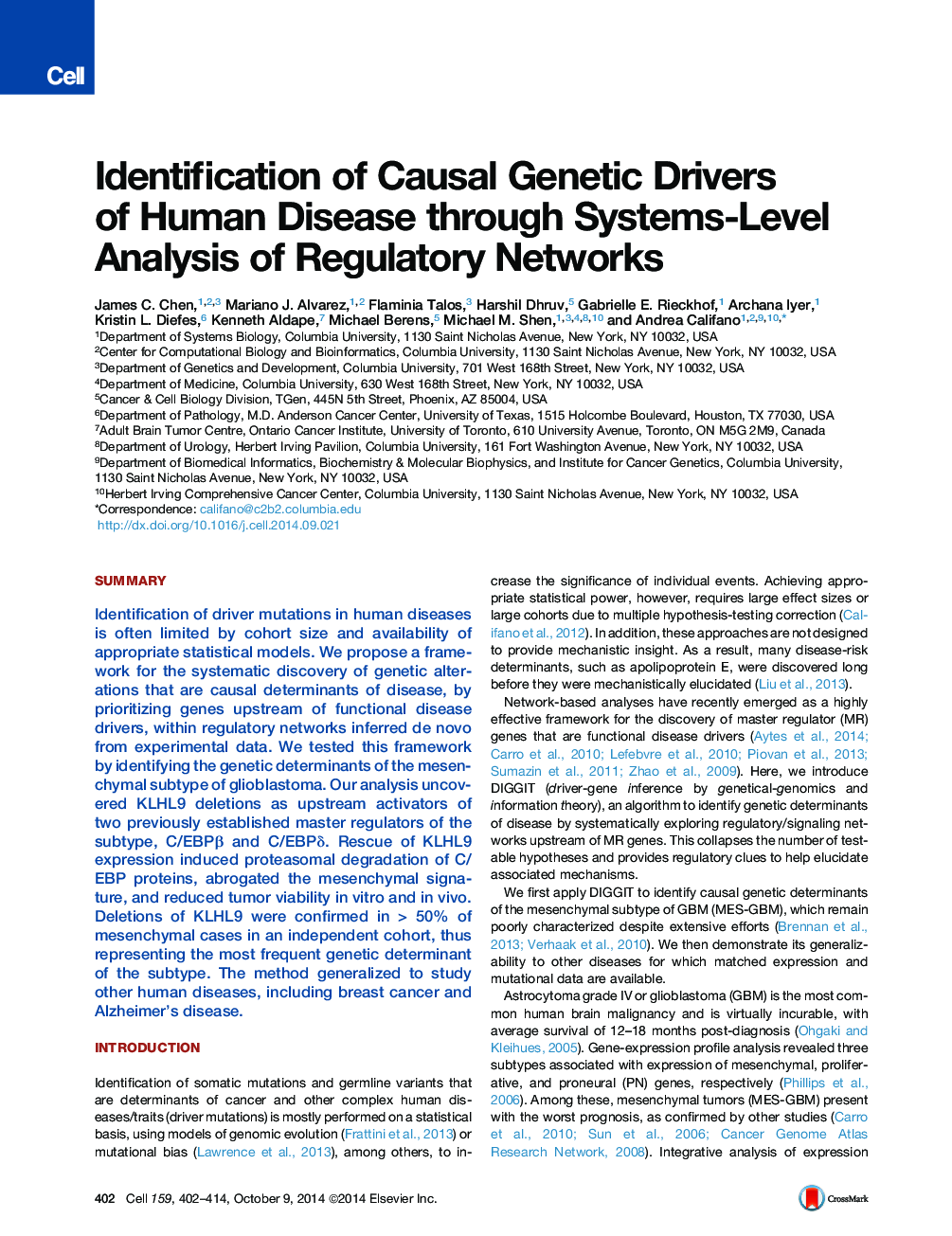| Article ID | Journal | Published Year | Pages | File Type |
|---|---|---|---|---|
| 2035495 | Cell | 2014 | 13 Pages |
•Combining cellular networks, gene expression, and genomic data finds new mutations•KLHL9 deletions predict mesenchymal transformation and poorest prognosis in GBM•KLHL9 posttranslationally regulates CEBPβ/δ, and rescue inhibits tumor growth•DIGGIT can be used on any genetic disease with matched expression and genomic data
SummaryIdentification of driver mutations in human diseases is often limited by cohort size and availability of appropriate statistical models. We propose a framework for the systematic discovery of genetic alterations that are causal determinants of disease, by prioritizing genes upstream of functional disease drivers, within regulatory networks inferred de novo from experimental data. We tested this framework by identifying the genetic determinants of the mesenchymal subtype of glioblastoma. Our analysis uncovered KLHL9 deletions as upstream activators of two previously established master regulators of the subtype, C/EBPβ and C/EBPδ. Rescue of KLHL9 expression induced proteasomal degradation of C/EBP proteins, abrogated the mesenchymal signature, and reduced tumor viability in vitro and in vivo. Deletions of KLHL9 were confirmed in > 50% of mesenchymal cases in an independent cohort, thus representing the most frequent genetic determinant of the subtype. The method generalized to study other human diseases, including breast cancer and Alzheimer’s disease.
Graphical AbstractFigure optionsDownload full-size imageDownload high-quality image (123 K)Download as PowerPoint slide
